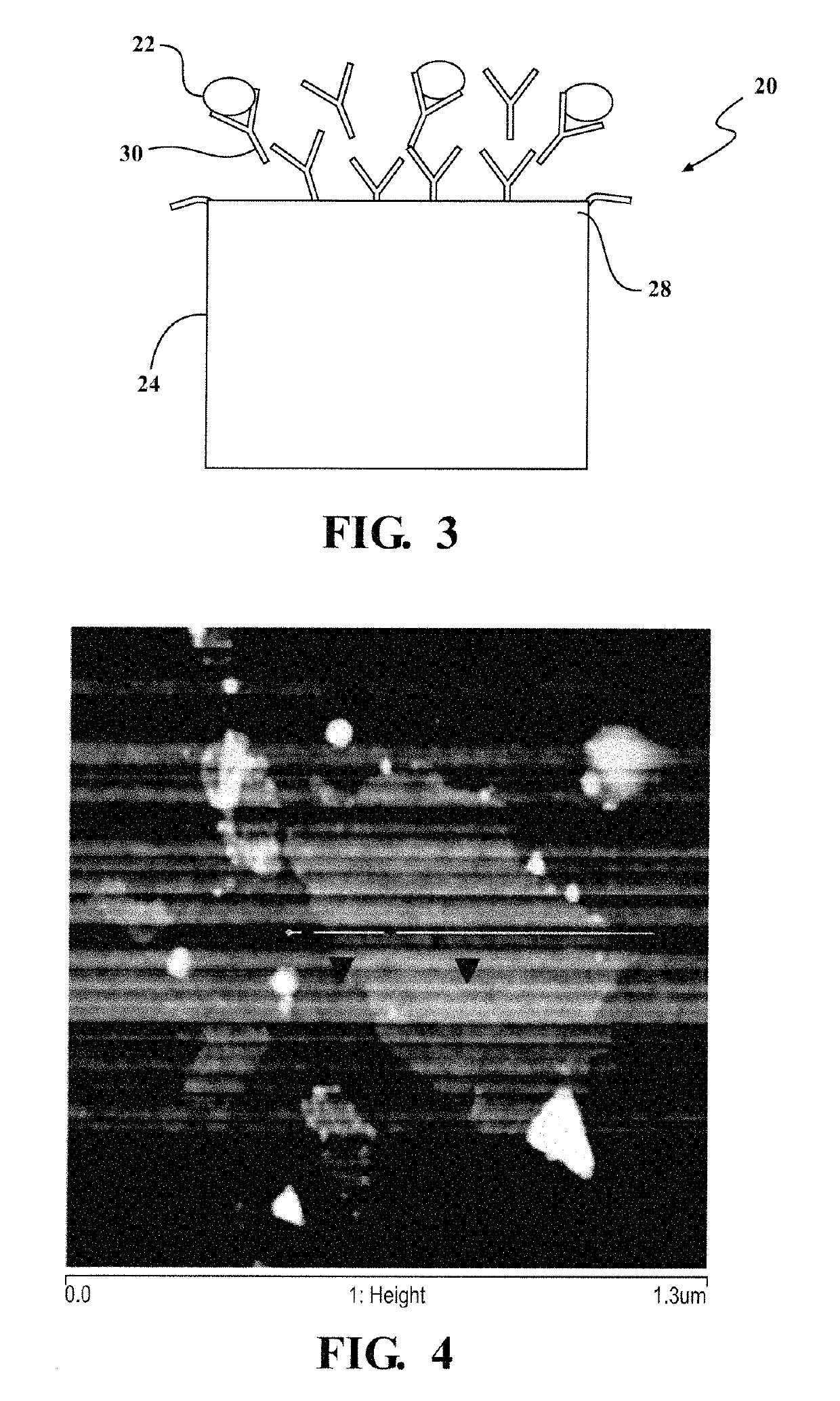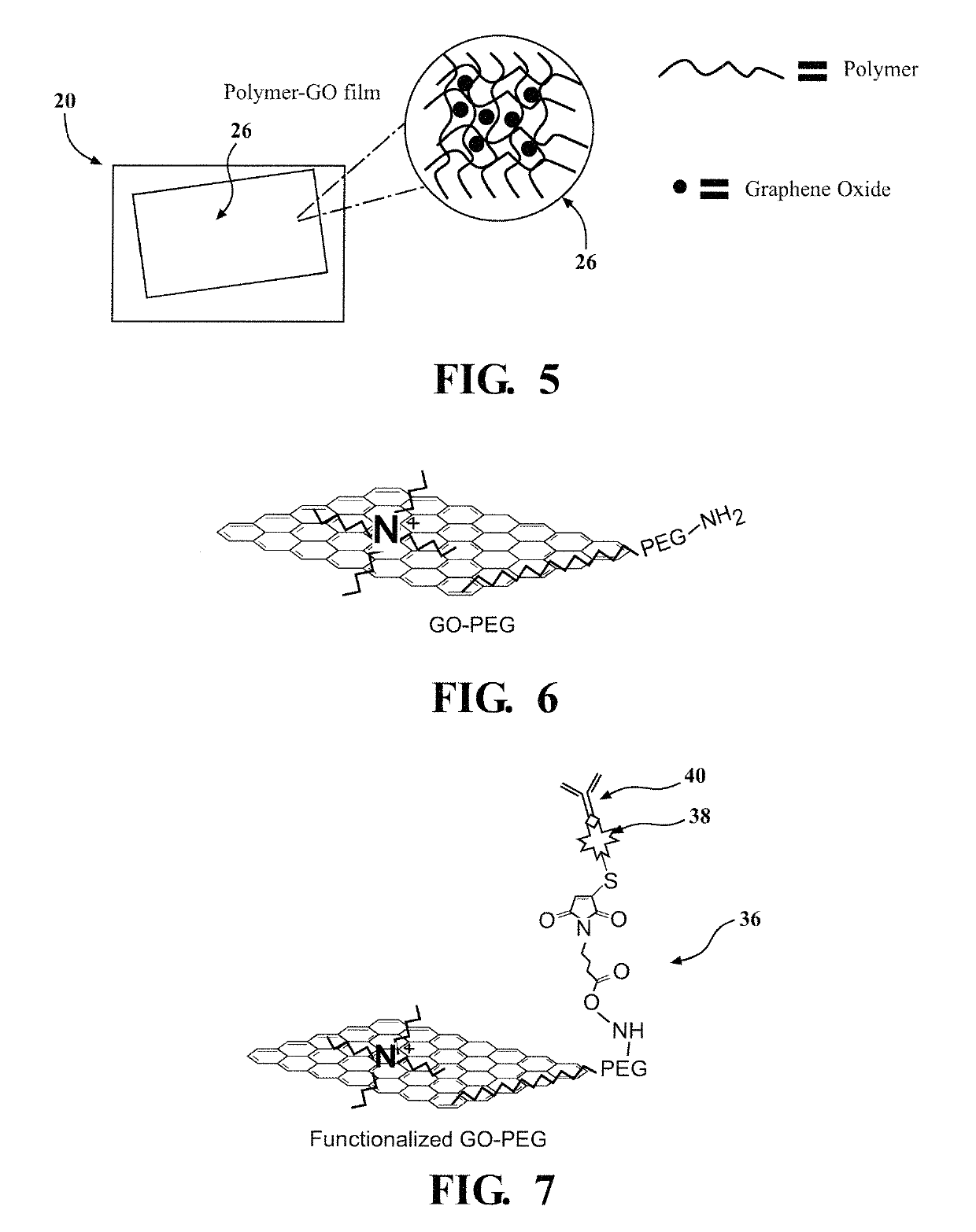System for detecting rare cells
- Summary
- Abstract
- Description
- Claims
- Application Information
AI Technical Summary
Benefits of technology
Problems solved by technology
Method used
Image
Examples
examples
Formation of a Microfluidic Device
[0172]A microfluidic device for processing of patient blood samples is formed having a two-dimensional, planar capture system using nanomaterial graphene oxide. The microfluidic device bottom substrate is coated with a composite film of functionalized graphene oxide dispersed in a matrix of thermo-responsive polymer with a lower critical solution temperature (LCST) of about 13° C. Surface available functionalized graphene oxide provides anchors for attaching a CTC capture antibody while the polymer matrix provides temperature dependent modulation of capture or release functionality. The microfluidic device is fabricated by drop-casting a polymer-graphene oxide blend on a patterned surface modified substrate.
[0173]The microfluidic device is usable at room temperature. This may be due to the polymer matrix having a LCST of about 13° C. as opposed to higher temperatures, such that there is no inadvertent release of the cells during capture. Further, ce...
PUM
| Property | Measurement | Unit |
|---|---|---|
| Temperature | aaaaa | aaaaa |
| Length | aaaaa | aaaaa |
| Temperature | aaaaa | aaaaa |
Abstract
Description
Claims
Application Information
 Login to View More
Login to View More - R&D
- Intellectual Property
- Life Sciences
- Materials
- Tech Scout
- Unparalleled Data Quality
- Higher Quality Content
- 60% Fewer Hallucinations
Browse by: Latest US Patents, China's latest patents, Technical Efficacy Thesaurus, Application Domain, Technology Topic, Popular Technical Reports.
© 2025 PatSnap. All rights reserved.Legal|Privacy policy|Modern Slavery Act Transparency Statement|Sitemap|About US| Contact US: help@patsnap.com



